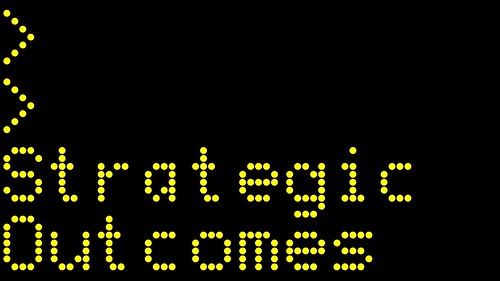October 2024 newsletter introduction
Welcome to my October 2024 newsletter, this newsletter marks my 15th issue. This is the second year that I have written about Hallowe’en sharing my Mam’s recipe for barmbrack – an Irish household standard. When I lived in Hong Kong, the locals enthusiastically adopted western Hallowe’en culture with local amusement parks Ocean Park and Hong Kong Disneyland competing to create the scariest experience for young people and dating couples. They mixed western and local horror motifs. It’s amazing how thanks to the mass media Hallowe’en has become a global cultural event. More on that later.
As for the significance of the number 15? It seems to have deep significance in modern culture with a wide range of artists including Taylor Swift and Marilyn Manson using it as the title of songs, albums or mixtapes. Additionally, the number has some significance in Judaism. The number 10 represents the hand of God and the number 5 represents to save or rescue. If we add 10 plus five, we get 15. The symbolic meaning of 15 translates to “mercy,” which means compassion and forgiveness.
New reader?
If this is the first newsletter, welcome! You can find my regular writings here and more about me here.
Things I’ve written.
- An honest review of the Apple Watch Ultra 2 – which is as much a critique of wearables as a category, as the device itself.
- Cocaine Cowboys is a book on Irish crime, but the title is as interesting as the book in terms of its particular cultural resonance in Ireland and a reflection of the Irish experience.
- Nike changes CEO John Donahue, as it faces unprecedented challenges due to unforced self-inflicted strategic errors.
- Pagers and more things can be found here.
Books that I have read.
- Taylor Lorenz’ Extremely Online is a history of the social web from bloggers to the present day. Lorenz’ telling is very US-orientated but an interesting account of how influencers and brands evolved their social presence adapting to platform changes such as the disappearance of Vine. Aspects that I found fascinating included how influencers accelerated their following through offline events rather similar to Japan’s idol industry and the career resilience of the Paul brothers
- The Murderers by Frederic Brown provides a criminal side view to a story in a world that one would recognise from James Ellroy‘s neo-noir crime world of Los Angeles.
Things I have been inspired by.
Tourism Ireland: Halloween.
Hallowe’en was a huge part of my childhood in an Irish household, bairn brack and tea, going around and collecting apples, dried fruit and hazelnuts from neighbouring houses, carving out a turnip lantern, making a papier-mâché mask, enjoying ghost stories on RTÉ radio and strange noises that came from the worsening weather and wildlife. However, America seems to have defined a lot of the narrative and globalised behaviours around the festival.
Living in Asia, I saw revellers in Hong Kong and Japan enjoy the festival and borrow heavily from Hollywood from ET to the Halloween franchise. Like Irish-American cuisine, American Halloween is based on the European traditions brought to the new world and then reinterpreted.
So I was fascinated to see Tourism Ireland’s campaign to reclaim Halloween from internally pervasive American soft power and Hollywood; going back to the festival’s pagan origins.
Meaningful patient engagement
Measuring and Demonstrating the Value of Patient Engagement Across the Medicines Lifecycle is a call to action to assess and measure patient engagement for the pharmaceuticals industry. It redefines the concept of patient-centricity – a popular concept that has become increasingly prominent and popular in the industry. (Disclosure, the paper involved a couple of former Concentric HX Wegovy launch colleagues: Fay Weston and Zoe Healey).
The Change Makers
Brand purpose has lost a good deal of unalloyed credibility in marketing circles (for some very good reasons). But that doesn’t mean that consumers got the memo. Havas’ The Rise of the Change Makers report looks at change through this lens. Like the Edelman Trust report, it has tracked the change in consumer zeitgeist over the past few years.
Social effectiveness
There was a couple of interesting research papers in the International Journal of Advertising. Firstly, digital detoxing by consumers seems to have a temporary inoculation against social media advertising when they return to using a social platform. Secondly, romance sells, or the psycho-romantic aspect of parasocial relationships sells – which should be taken into account when weighing up influencers that brands might want to partner with.
Things I have watched.
Series three of ITV’s Van Der Valk’s reboot is a sleeper series that I have enjoyed watching with my Dad. Season 4 has debuted in the US on PBS, but there is no sign of it being picked up in the UK yet.
The series is based on a series of thrillers written in the 1960s by Nicolas Freeling; the first one was Love in Amsterdam. The original TV adaptation featured Barry Foster as Van Der Valk whose performance gave the original show a unique look-and-feel.
I watched some vintage Jack Ryan with a young Ben Affleck playing the CIA analyst in an adaption of The Sum of All Fears. This version is usually overlooked in favour of the modern TV series and the Harrison Ford films. Alan Bates played a delicious villain; an Austrian politician with far right tendencies. Bates’ character felt the most prescient of all the characters, while the thawing relationship with Russia feels further away with each passing week. Unfortunately, the franchise was left on the shelf for a while after this film was made; Ben Affleck made a good Dr Ryan and Liev Schreiber was a good foil as character John Clark – the real muscle in Tom Clancy’s books.
Amazon Prime Video has some sleeper films if you dig around. Deliver Us From Evil is a respectable Korean action film with the classic ‘tragic hero’ plot line popularised in Hong Kong and Japanese cinema. While it has been compared to The Raid, there is an Old Boy feel to the violence. Much has been made of it starring Lee Jung-jae – known to global audiences for his role in Netflix’ Squid Game. It’s just under two hours of enjoyable escapism.
I rewatched Inception for the first time since I saw it in the cinema. Since then we’ve had COVID and a generative AI-filled media sphere and the film hit different. It no longer felt exceptional in the way that films like Blade Runner and the Studio Ghibli back catalogue still do.
Il Divo was one of a couple of DVDs that I bought instead of paying the Netflix tax. Il Divo appealed to me because of my love of real-life Italian intrigue, sparked by watching The Mattei Affair for the first time several years ago. I became reacquainted with it more recently again when I rewatched it. Il Divo covers the political intrigue of the 1970s and 1980s, in particular Giulio Andreotti, an Italian prime minister and failed presidential candidate. At the time Italy suffered from far left terrorist attacks and a reactionary right-wing movement that revolved a freemason lodge known as P2. Andreotti’s leadership is directly linked to a succession of deaths of enemies and associates during his career – which the film displays in an artful tableau at the beginning.
It is a very complex time in modern Italian history and the story tries to pull different strands of the story in through different vignettes. Like The Mattei Affair before it, a certain amount is left up to the audience’s interpretation.
Not television, but my current favourite show on BBC Radio 4 is Central Intelligence, which is part of their Limelight drama content. I love it for a few reasons:
- I grew up with cold war-era espionage books and The Troubles in Northern Ireland, so the security services stories owned a bit of real estate in my head. Given the way things have been going over the past decade, this kind of world has been raising its head again.
- It’s a really well researched show with high production values on the history of the CIA told from the prospective of Eloise Page who joined the agency at its start and had a 40-year career.
- Fantastic voice talent. Accomplished high profile film actress Kim Cattrall who has appeared in iconic film and television roles playing both comedic and meaty characters. Ed Harris is a fantastic, but less well known actor who appeared in classic movies from The Right Stuff and Walker to portraying The Man in Black in the Westworld TV series.
Useful tools.
Downloading images on a web page
Imageye is a browser extension that helps you download all pages on a given web page. It can be handy for mood boards and social research.
Getting to Heathrow
I have had to do a bit of travel. Thankfully it has been well planned. One of the things that helped my planning and saved money is the Heathrow Express’ £10 Advanced Discounted Tickets. More details on the caveats surrounding the discount here.
Buying cheaper
MoneySavingSupermarket has a search engine of products available via Amazon Warehouse. If you’re a jobbing freelancer or just looking for something for your home – it allows you to buy that item a bit cheaper.
The sales pitch.
I am now taking bookings for strategic engagements from January 2025 onwards; or discussions on permanent roles. Contact me here.
More on what I have done here.

The End.
Ok this is the end of my October 2024 newsletter, I hope to see you all back here again in a month. Be excellent to each other and onward into November, but not before you’ve charged your energy levels up on Hallowe’en treats!










